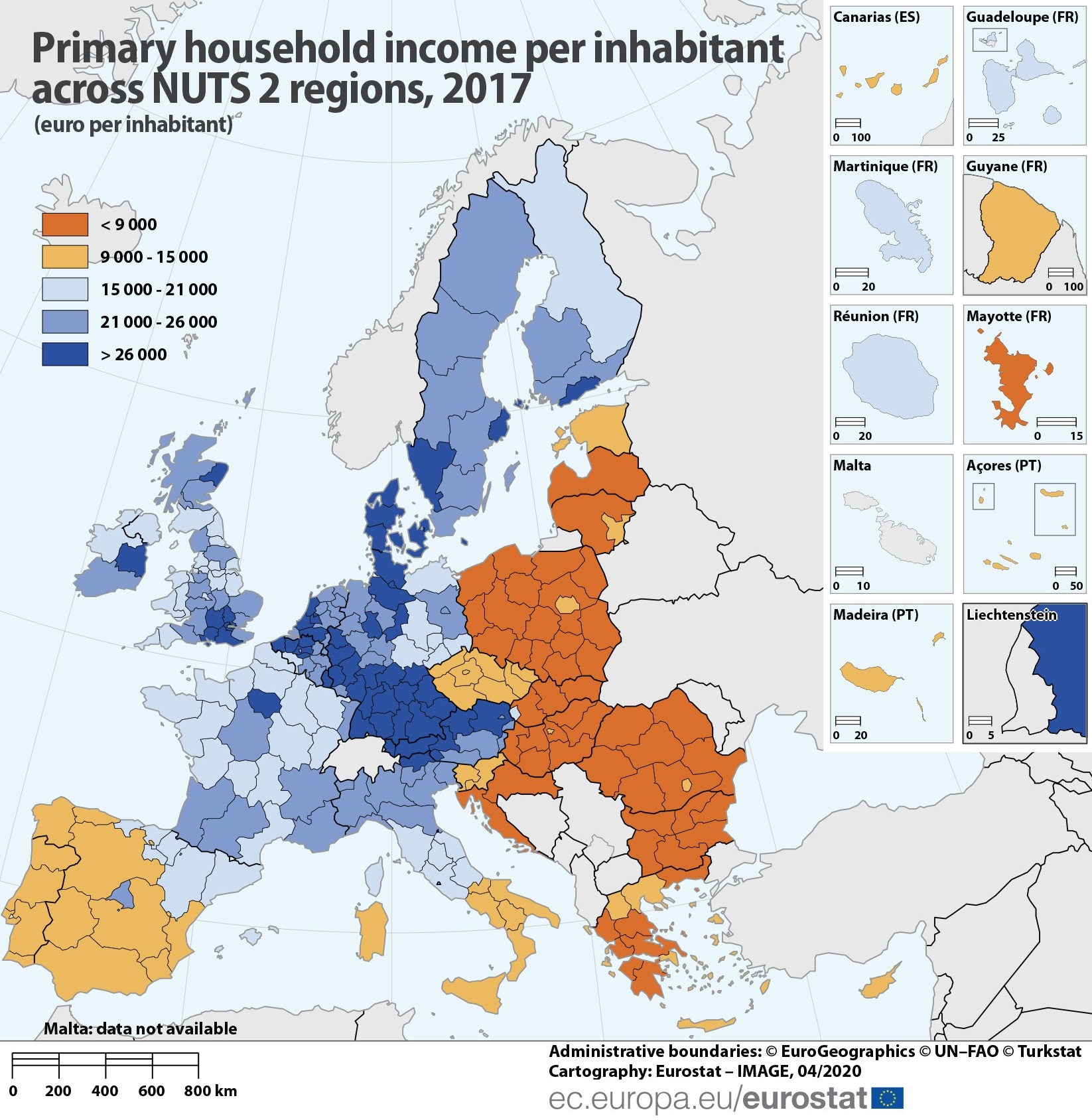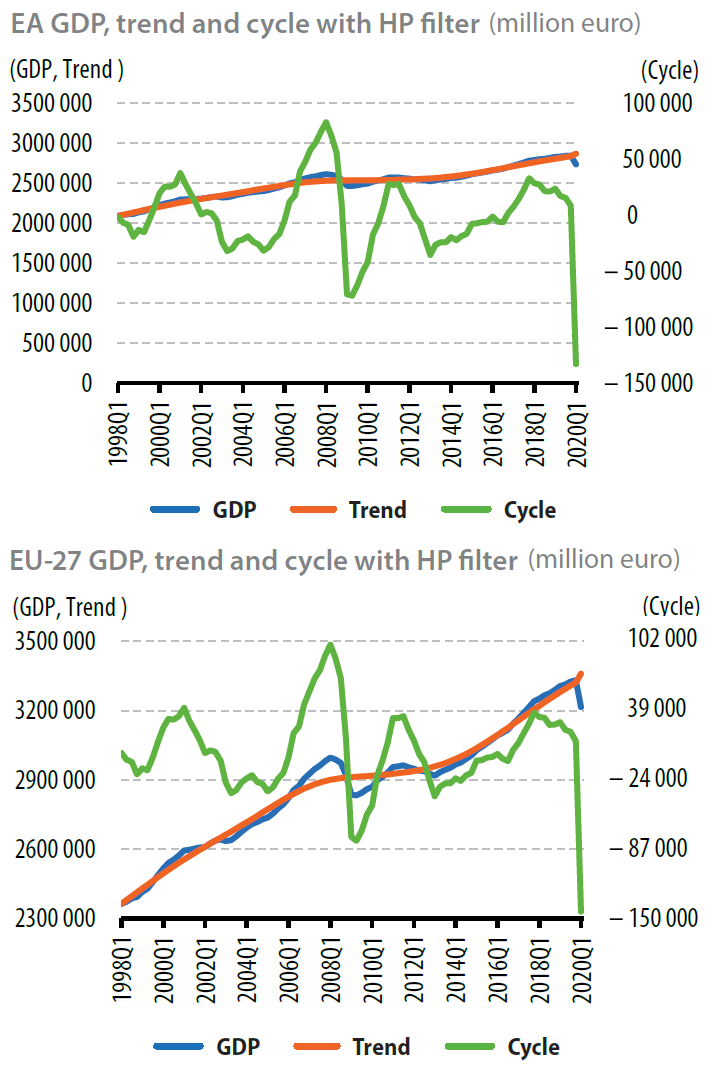According with the latest news release by Eurostat, the primary income per inhabitant in the European Union (EU) was 18,800 euros. Across EU NUTS 2 (Nomenclature of territorial units for statistics) regions, it ranged from 37,900 euros per inhabitant in Luxemburg to only 2,500 euros in Severozapaden (Bulgaria).
Additionally, 49 regions across 11 countries had a primary income per inhabitant in excess of 26,000 euros, including Denmark (all regions), more than half of the regions of Germany (22 out of 38), around half of the regions of Belgium (5 out of 11), a third of regions of the Netherlands (4 out of 12), one region in both France (out of 27) and Italy (out of 21) as well as Luxembourg (single region).
On the contrary, 50 regions had a primary income per inhabitant below 9,000 euros including all regions of Bulgaria, Hungary (except Budapest), Poland (except Warsaw), Romania (except Bucharest) and Slovakia (except Bratislava), around half of the Greek regions, one region in France, Croatia and Lithuania as well as Latvia (single region).
Statistics about income could be followed by household conditions. In 2018, there were 194 million households in the EU, an increase of 12 million since 2010. However, as the number of households in Europe goes up, their average size goes down. The average household size slowly decreased from 2.4 people to 2.3, while the share of single person households (currently nearly a third of all households) recorded a 17% increase since 2010.
The overall trend is towards households consisting of persons living alone, single parents and couples without children. In most households, there are no children and single parent households have gone up by 13% since 2010.
At the same time, in 2018, the number of years a person is expected to continue to live in a healthy condition at birth in the European Union was estimated to be 64.2 years for women and 63.7 years for men.
The pandemic impact
Both the Euro Area (EA) and the European Union are facing a very significant crisis. Demand, output, labor, and prices, must cope with new trends and business cycles, meaning that the global economy cannot be stable at this point as the pandemic is not over yet.
























0 comments:
Post a Comment